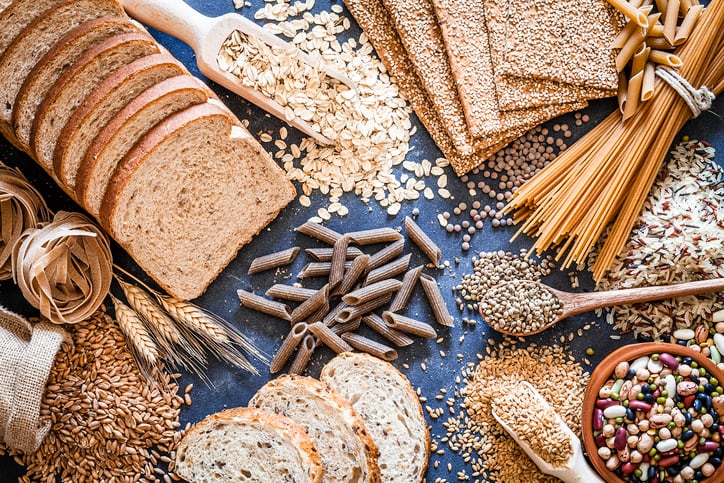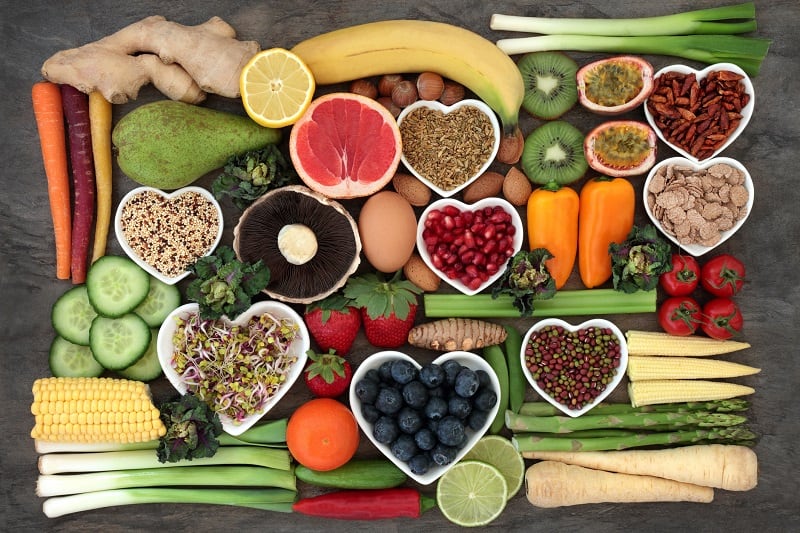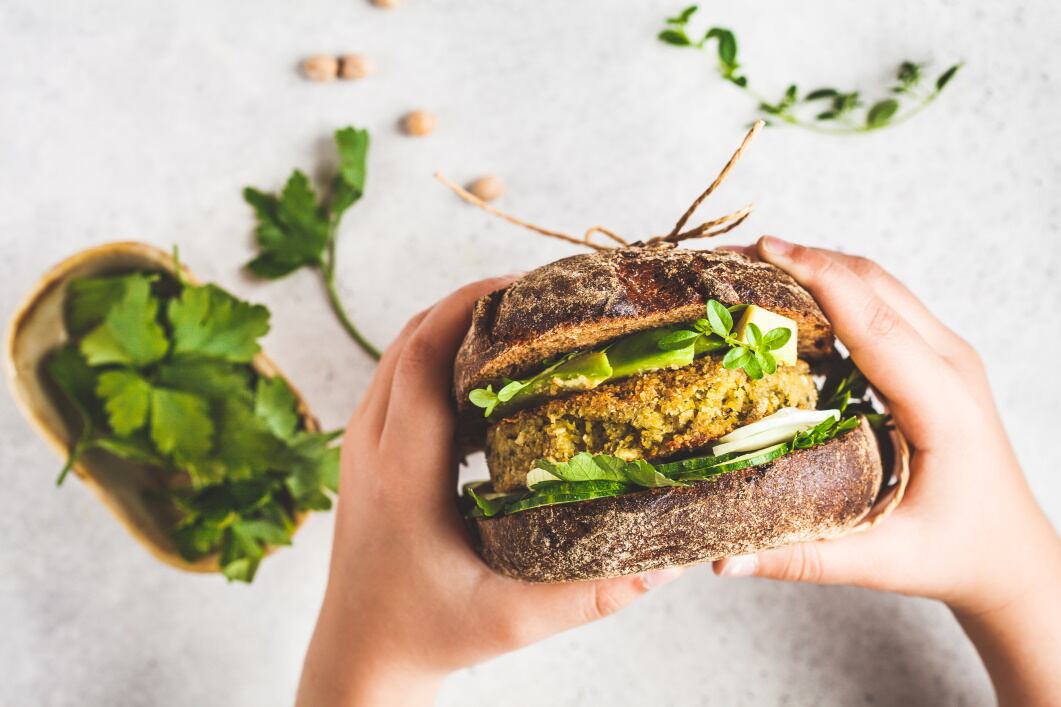‘Brown, bland and boring’ fibre has an image problem. The FDF wants to change this. Last year it launched the Action on Fibre initiative. This aims to make high-fibre diets more appealing and easier for people to consume. Why? We don’t eat enough of it. We don’t know how much of it we need. Even if we did, we don’t know how to get it into our diets.
Just 9% of UK adults currently meet the recommended 30 grammes a day. The problem isn’t unique to the British. Fibre intake in most European countries is below the recommended levels.
But eating 30 grammes is difficult, explained the FDF’s Sector Technical and Regulatory Executive Fiyin Makinwa.
“One study showed that even if you ate three portions of starchy carbohydrates and five portions of fruit and veg a day, you still wouldn't reach 30 grammes,” she told a recent Focus on Fibre webinar. Considering less than 0.1% of the population meet all nine recommendations from the Eatwell Guide (which shows how much of what you eat should come from each food group to achieve a healthy, balanced diet) it's not surprising it's so hard to hit 30 grammes.
The same study noted it is possible to reach 30 grammes, but you would need to eat eight portions of fruit and veg, topped up with high-fibre snacks throughout the day, and base all your meals predominantly on wholegrain starchy carbohydrates. If you think only 26% of the UK population actually manage to eat five portions of fruit and veg a day, you can again see why it's such a struggle.
Knowledge gaps drive fibre deficiencies
There's also a lack of knowledge about the sources of fibre, added Makinwa. The FDF’s research has revealed that while most people know that wholemeal bread provides fibre, there are misconceptions on the wider sources. In one survey, one in 10 people thought eggs contained fibre.
Most of us associate fibre with digestion. But its health benefits far outweigh this. Studies have shown a high-fibre diet can lower the risk of cardiovascular disease, type 2 diabetes and certain types of cancer such as colorectal cancer. Fibre has also been shown to reduce heart disease and can slow digestion, stabilise blood sugars, improve energy intake and assist with weight loss, according to Dr Alona Pulde from global nutrition app Lifesum.
A further frustration for the FDF is that government policy over the years has focused on cutting the amount of fat, salt and sugar we consume, while there has been little action to increase foods and nutrients we need more of.
Over 20 well-known brands, including Nestlé, Birds Eye and Kellogg’s, have so far backed the Action on Fibre initiative. They’ve pledged to launch new products that are high in fibre and reformulate products to incorporate more fibre in them.
This brings technical challenges though. It’s not as simple as just adding fibre to a recipe. Companies need the knowledge and experience to be able to rebalance the recipe to keep it tasting right. And do consumers want to buy high fibre-products? Consumers are notoriously fickle after all, said Louise Dye, Professor of Nutrition and Behaviour at the University of Leeds Human Appetite Research Unit. “There's a mismatch between what consumers say they want, and what they do,” she said. “They say they want healthy sustainable food. In practice they buy cheap, lower quality food for price and convenience."
Allowable health claims aren’t doing fibre any favours either. FSA-approved claims are limited, for example, to things like ‘increased faecal bulk’, ‘normal bowel function’, and ‘acceleration of intestinal transit’. Probably not what most of us want to read on our food packaging.
“The current claims on fibre are really sexy,” deadpanned Dye. Food marketing is therefore perpetuating the stereotype that fibre is 'brown, bland and boring', she claimed. “The perception of fibre if you ask the general public is that it's roughage, it's medicinal and important for bowel regularity. It needs chewing and it doesn't taste good.”
Fibre is further bracketed with involving longer cooking and preparation times and higher price. Not a hit with time-poor consumers facing a cost of living squeeze. Then there’s the further complication of people quickly abandoning a high-fibre diet if they experience GI symptoms.
But high-fibre diets might solve a wealth of health problems. “It’s been estimated the cost for treating untreated unplanned hospital visits due to constipation is £145 million,” revealed Dye. “10% of GDP consultations are about digestive heath – and that's probably the tip of the iceberg. Digestive health is third on the list of reasons to by healthier products for consumers.”
Studies at the Human Appetite Research Unit have also shown intake of soluble fibre found in cereal grains is associated with better physical, and psychological health.
Can health by stealth be the fibre driver?
If companies are serious about boosting fibre contents, Dye suggested they go down the health by stealth route, which has worked well in sugar and salt reduction, and make surreptitious, incremental additions to products. “It's really important not to make goals unrealistic,” she observed. “People won't eat lentils every day or go from 15g to 50g overnight but even a 5g increase will bring health benefits.”
More positive messages are needed too, she said, encouraging people to, for example, eat a variety of foods; eat more fruit and vegetables; eat plenty of colours; eat more grains or cereals. Prohibitive messages don't encourage behaviour change, they simply turn people off.
Nestlé is one company heeding this advice. Nestlé UK and Ireland Nutrition Manager Anna Collins agreed fibre’s dilemma is down in part to many people being hampered by a lack of confidence in their cooking skills. Nestlé brands are looking to be creative in their marketing to encourage fibre intake, she revealed.
New packaging on its Maggi brand of seasonings, for example, will have meal suggestions that contain at least two serves of vegetables per portion. Nestlé’s brands are also leveraging social media in an attempt to celebrate and invigorate the humble vegetable.
"Making foods visually appealing can help change perceptions,” said Collins. Social media videos can make boring, bland vegetables look bright, vibrant and flavoursome, she explained, “A lot of people are nervous and don't know how to prepare vegetables in an appealing way, so giving some practical tips and visuals can help.”
The next protein?
Fibre definitely has an image problem, agreed Brett Goldhawk, Managing Director of Ziggurat Brands, a brand design and innovation agency specialising in the food and drink sectors.
Fibre is somewhat of a conundrum, he told FoodNavigator. “We all know we need it but many of us still have visions of our grannies eating a bowl of prunes to help her stay regular – her words not mine. It’s not a sexy nutrient, particularly as people still associate it with a good number two.”
But it wasn’t so long ago that protein was in the same dilemma. This was once a nutrient that was believed to leave you overweight, bloated and feeling lethargic. “But guess what? Protein is now en vogue, tapping into the global megatrend of seeking out healthier and more active lifestyles,” Goldhawk told us.
Brands like Grenade, which recently sold to Mondelez for £200 million, illustrate protein’s success story. Into the bargain, the global animal and plant-based protein market continues to grow and is forecasted to be valued at around $71 billion by 2025.
There’s no reason fibre can’t do the same, believes Goldhawk.
“With its current market value currently around $40bn, the smart marketers amongst us might spot that the size of the opportunity is possibly worth $30bn to savvy companies who redirect their innovation funnels into making fibre part of the same megatrend.
“I believe the solution from these learnings is about reframing the benefits. Focus less on the bowels and more on its enablers – to live longer, lose weight and reduce the risk of heart disease. Seriously awesome benefits – not brown, bland and boring as first perceived.”
Join us when Cereal Partners Worldwide (CPW), the maker of Nestlé branded cereals, discusses how the company is fortifying with fibre, reformulating recipes and keeping the clean, lean labels that consumers are looking for. This session will take place as part of our free-to-view broadcast event, Positive Nutrition: Healthy Innovation for the Mass Market.
CPW will be joining our packed line-up of speakers including brands, nutrition experts, ingredient innovators and trend watchers. You'll hear from names including Birds Eye, The Fry Family Food Co, Heura and more!
Click HERE to see more details on the Positive Nutrition agenda and HERE to register your interest.





